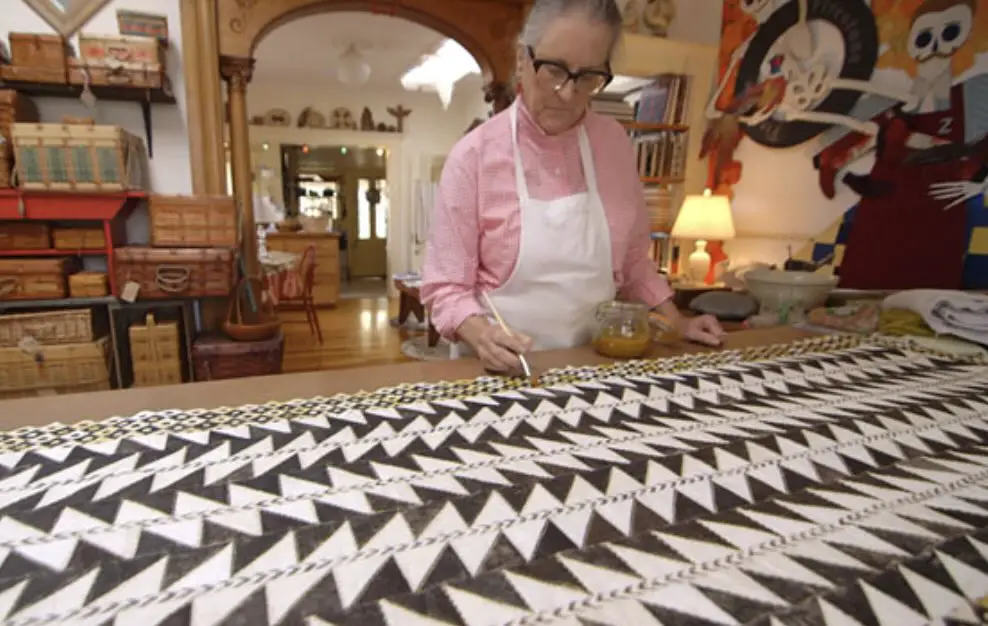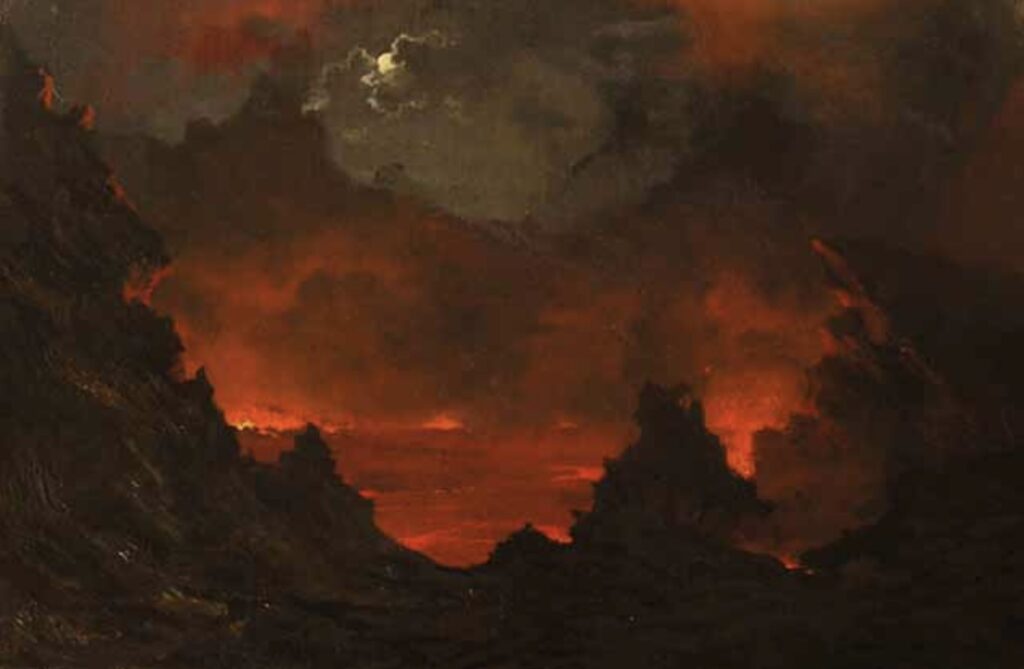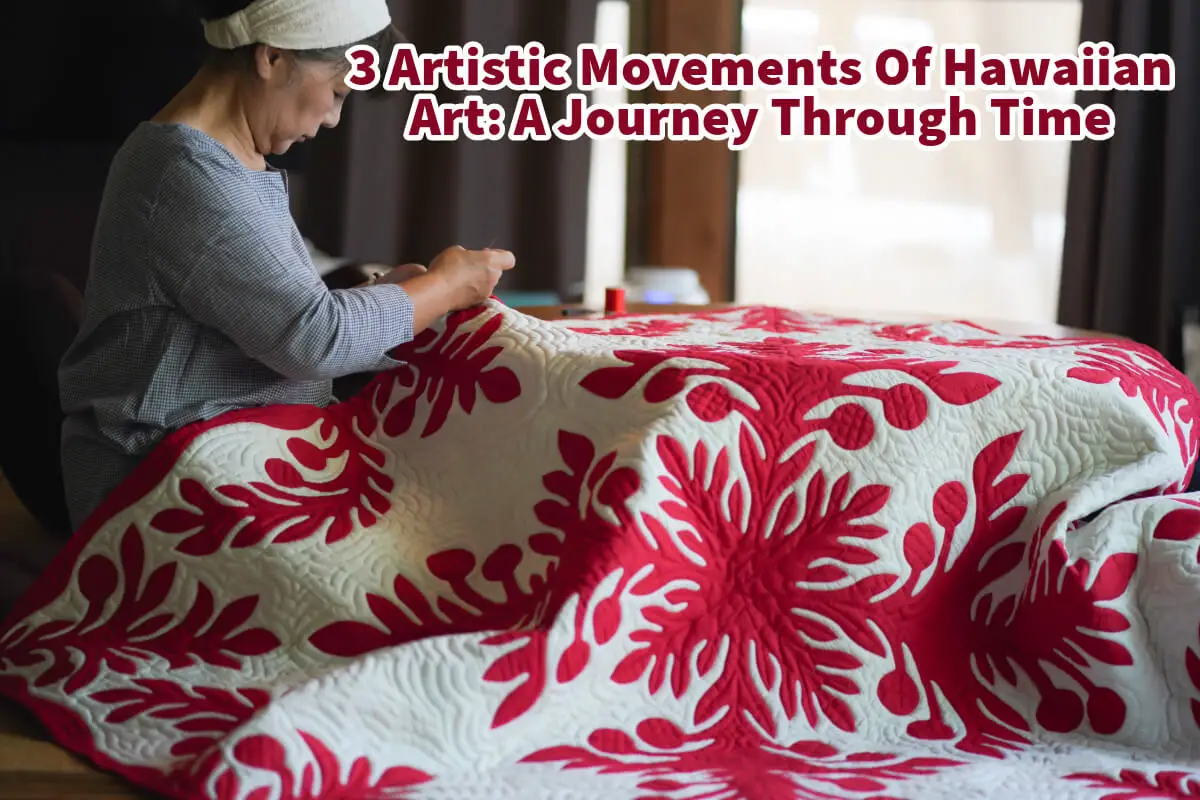Hawaii, a destination renowned for its breathtaking landscapes and rich cultural heritage, also boasts an incredibly vibrant art scene that often goes unnoticed by many.
The artistic expressions of this island paradise span centuries, evolving through significant historical periods that mirror the transformation of its society and culture. This exploration into the three pivotal stages of Hawaiian art reveals a tapestry of profound and diverse creativity, reflecting the spirit and history of Hawaii and its people.
Table of Contents
- The Evolution Of 3 Hawaiian Art Movements: A Journey Through Time
- Hawaiian Art Continues To Evolve
- Related Questions
The Evolution Of 3 Hawaiian Art Movements: A Journey Through Time
Hawaii is often celebrated for its stunning beaches, but it’s essential to recognize that it’s also a sanctuary of unique and diverse art forms. To fully grasp the essence of Hawaiian culture, one must delve into its rich artistic heritage. Hawaiian art can be categorized into three distinct eras, each marking significant periods in the island’s history.
The first era encompasses the art created before the arrival of Westerners, showcasing a profound connection to the indigenous people’s natural environment and spiritual beliefs. This period is characterized by traditional crafts such as wood carving, featherwork, and the creation of petroglyphs, which were aesthetically pleasing and held deep cultural and spiritual significance.
Following the arrival of Western explorers, a new chapter in Hawaiian art unfolded, blending traditional Hawaiian techniques with Western influences. This period witnessed the integration of new materials and artistic concepts, leading to the creation of works that reflected a fusion of cultures yet remained distinctly Hawaiian in their themes and inspiration.
In contemporary times, we are experiencing what can be described as a renaissance of Hawaiian art. This exciting phase is marked by a resurgence of interest in traditional and modern artistic practices, with artists drawing on Hawaii’s rich cultural legacy while pushing boundaries and exploring new avenues of expression.
This renaissance is a testament to Hawaiian art’s vibrant and evolving nature, offering art lovers a unique and dynamic insight into the island’s cultural soul.
The Dawn Of Artistic Expression: Pre-European Art In Hawaii
Long before European footprints touched the shores of Hawaii, the islands thrived with a rich tradition of art deeply embedded in the fabric of ancient Hawaiian society. The artisans of old Hawaii held a revered place within the community; their crafts were not merely acts of creation but sacred rituals that paid homage to their culture and deities.
Na Hana Noeau’ – Wise and Skillful Works
These early Hawaiian artists mastered a variety of mediums, from intricate wood carvings and feather work to the crafting of petroglyphs, bark cloth (kapa), and tattoos. Their work embodied ‘na hana noeau’ – a term that translates to ‘wise and skillful works,’ encapsulating art forms that were both aesthetically pleasing and practical.
The ancient Hawaiians were consummate artists, adhering to strict aesthetic principles that imbued their work with deep spiritual significance. Artworks were seen as vessels of ‘mana’ (spiritual power) and ‘pono’ (righteousness), reflecting the artists’ connection to the divine.
Native Hawaiians Used Natural Materials For Art
Without access to metal or woven fabrics, the Hawaiians turned to natural resources: kapa made from the wauke plant, lauhala (woven hala leaves), koa wood, and hulu manu (feather work). These materials were transformed through painstaking processes into objects of both everyday use and ceremonial importance.

Kapa making, for example, involved a labor-intensive method of beating and fermenting the wauke plant to create a versatile fabric, while lauhala weaving produced everything from mats to baskets.
The art of featherwork resulted in stunning garments and accessories reserved for the Hawaiian elite. These showcased the skill of artisans who painstakingly collected and assembled the vibrant feathers of native birds. Koa wood was another essential medium for creating various items, from canoes to religious figures, highlighting the Hawaiians’ deep connection to their environment.
The Confluence Of Worlds: Non-Native Hawaiian Art
The arrival of Europeans in Hawaii marked the beginning of a new era in Hawaiian art, introducing Western materials and artistic sensibilities to the islands. This period saw the continuation of traditional Hawaiian crafts alongside the emergence of art created by Westerners, drawn to Hawaii’s exotic allure.
19th Century Volcano School
The 19th century, in particular, witnessed the rise of the Volcano School, an art movement captivated by the Hawaiian Islands’ dramatic landscapes and volcanic eruptions.

Artists like Jules Tavernier, Charles Furneaux, and Joseph D. Strong ventured into Hawaii’s rugged terrain, braving harsh conditions to capture the majestic beauty of its volcanoes on canvas. Their work, a fusion of imported artistic techniques and Hawaii’s natural wonders marked a significant moment in the island’s artistic evolution.
Hawaiians Started To Use New Materials
As Western influence grew, Hawaiian artists began incorporating new materials and ideas into their work, leading to a rich intermingling of cultures reflected in painting, quilting, and other art forms.

Hawaiian quilting, in particular, stands as a testament to the enduring legacy of ancient Hawaiian artistry. It blends traditional kapa patterns with the influence of Western techniques to create works that celebrate the island’s natural beauty and the spirit of its people.
In the 20th century, they heralded a renaissance in Hawaiian art, as artists native to the islands and newcomers sought to reconcile modernist influences with Hawaii’s rich cultural heritage.
Hawaiian Motifs And Art Deco
The Art Deco period of the 1920s to 1940s saw a stylized interpretation of Hawaiian motifs, capturing the islands’ essence in a modern visual language. This era laid the groundwork for a vibrant contemporary art scene in Hawaii, characterized by diverse media and styles.
Hawaiian Traditional Arts And Crafts Emergence
From traditional crafts such as lei making and coconut weaving to modern expressions in surf photography, fine art, and printmaking, Hawaii’s art scene is a dynamic reflection of its cultural melting pot.
The state’s commitment to celebrating its artistic heritage and contemporary achievements is evident in the abundance of museums and galleries across the islands. The Hawaii State Art Museum, Honolulu Museum of Art, and Bishop Museum, among others, offer art enthusiasts a glimpse into the depth and diversity of Hawaiian art, from its ancient roots to its modern iterations.
Hawaiian Art Continues To Evolve
The evolution of Hawaiian art is a journey through time. It reflects the islands’ rich cultural history, the confluence of native and foreign influences, and the ongoing dialogue between tradition and modernity. This vibrant tapestry of artistic expression continues to evolve, capturing the imagination of locals and visitors alike.
As we explore the layers of Hawaiian art, from its ancient origins to the contemporary era, we are reminded of the power of art to convey the essence of a people and place. Hawaiian art is a visual feast and narrative woven with history, spirituality, resilience, and innovation threads.
The continued evolution of Hawaiian art demonstrates the community’s dedication to preserving its heritage while embracing change and diversity. This commitment ensures that Hawaiian art remains a living, breathing aspect of Hawaiian culture, dynamically adapting to the times while staying rooted in its ancestral values.
Hawaii’s artistic journey tells a story of unity and diversity, illustrating how different cultures can create something uniquely beautiful.
As the Hawaiian art scene flourishes, it becomes a mirror reflecting the islands’ societal changes and enduring spirit. It is a source of pride for Hawaiians, offering a way to keep their traditions alive and share them with the world. For art enthusiasts,
Hawaii presents a rich tapestry of stories and visions, where art bridges the past and the future, the local and the global, the tangible and the spiritual.
The evolution of Hawaiian art celebrates the human spirit’s capacity for creativity and adaptation. It is a testament to Hawaii’s unique cultural identity, inviting all who encounter it to appreciate the depth and breadth of its beauty.
As we look forward to the future of Hawaiian art, we can anticipate a continuation of this vibrant dialogue between tradition and modernity, ensuring that the art of Hawaii will remain an ever-evolving, captivating exploration of what it means to be Hawaiian in a changing world.
Anita Louise Art is dedicated to art education, great artists, and inspiring others to find and create their art. We love art that uplifts and inspires. #ArtToMakeYouSmile! #ArtToMakeYouHappy!
If you are interested to see any of my art, you can find out more by clicking here. If you are interested in what inspires me and my paintings, you can discover more by clicking here.
We have a free newsletter and would love you to be part of our community; you can subscribe to the newsletter by clicking here. If you have any questions, I would be happy to talk to you anytime. You can reach me, Anita, by clicking here.
Subscribe to our Anita Louise Art YouTube Channel filled with great videos and information by clicking here.
Join us for our podcast “5 Minutes With Art.” Spend just 5 minutes a week with us to discover and learn about great art and artists. You can find out more about our podcast by clicking here.
Related Questions
Louvre Museum Facts, Our Top 7 Facts
The Louvre is the largest museum globally; it was once built as a fortress to protect the city of Paris. Under the French Republic’s rule, General Napoleon expanded the Louvre’s collections. One of the most important paintings at the Louvre is the Mona Lisa painting by Leonardo da Vinci.
By clicking here, you can discover more by reading Louvre Museum Facts, Our Top 7 Facts.
11 Interesting Facts About Traditional Hawaiian Art
Hawaiian art is divided into three main periods: pre-European art, Nonnative Hawaiian Art, and Hawaiian Art With Western Influences. After Captain Cook arrived in Hawaii in 1773, traditional Hawaiian art changed as Western culture influenced Hawaiian art. The Volcano School of Art was developed in Hawaii in the late 1800s when the artist’s work became impacted by the live volcanic eruptions in Hawaii.
By clicking here, you can learn more by reading 11 Interesting Facts About Traditional Hawaiian Art.
Am I Too Old To Start Oil Painting?
You are never too old to learn to oil paint. You can start to oil paint at any age. If Grandma Moses could learn to paint at age 78, then she set an example for us all – that you are never too old to learn to paint. There are some advantages to learning to paint when you are older vs. younger.
By clicking here, you can discover more by reading Am I Too Old To Start Oil Painting?


